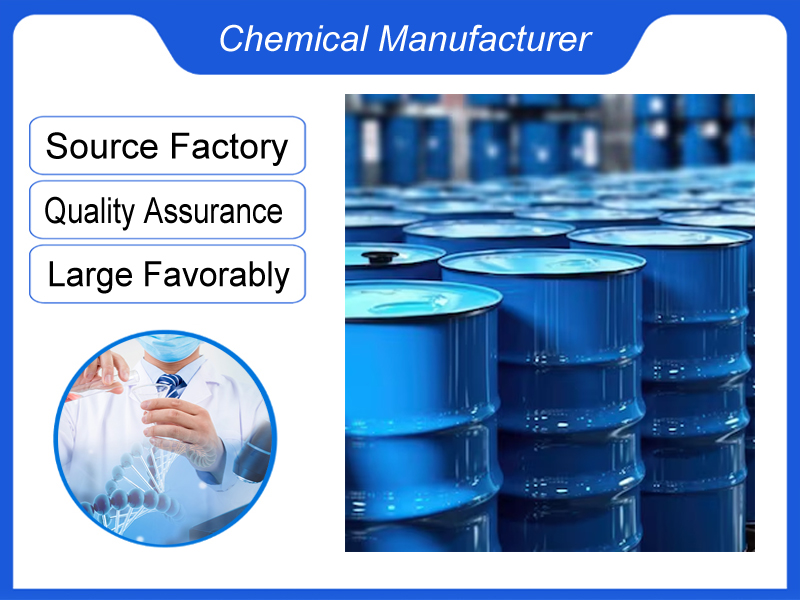
UV Absorber UV-9
CAS No. 131-57-7
Content 98%
Packing 25kg/bag
Names and Identifiers
Name
2-Hydroxy-4-methoxybenzophenone
Synonyms
UV-9
BP-3
Oxybenzone
cyasorbuv9
Escalol 567
Eusolex 4360
C...
Category:Paint chemicals
Introduction
CAS No. 131-57-7
Content 98%
Packing 25kg/bag
Names and Identifiers
| Name | 2-Hydroxy-4-methoxybenzophenone |
| Synonyms | UV-9 BP-3 Oxybenzone cyasorbuv9 Escalol 567 Eusolex 4360 Cyasorb uv 9 Benzophenone-3 Lankromark LE296 UV absorber UV-9 component of Presun 30 component of Presun 29 2-Benzoyl-5-methoxyphenol Ultraviolet absorber UV-9 Ultraviolet absorbent UV-9 Cyasorb uv 9 light absorber 4-Methoxy-2-hydroxybenzophenone 2-Hydroxy-4-methoxybenzophenone 2-Hydroxy-4-Methoxy Benzophenone 2-Hydroxy-4-methoxy-benzotriazole (2-hydroxy-4-methoxyphenyl)(phenyl)methanone |
| CAS | 131-57-7 |
| EINECS | 205-031-5 |
| InChI | InChI=1/C14H12O3/c1-17-11-7-8-12(13(15)9-11)14(16)10-5-3-2-4-6-10/h2-9,15H,1H3 |
| InChIKey | DXGLGDHPHMLXJC-UHFFFAOYSA-N |
131-57-7 – Physico-chemical Properties
| Molecular Formula | C14H12O3 |
| Molar Mass | 228.24 |
| Density | 1,3 g/cm3 |
| Melting Point | 62-64°C(lit.) |
| Boling Point | 150-160°C5mm Hg(lit.) |
| Flash Point | 216°C |
| Solubility | Easily soluble in most organic solvents, insoluble in water. |
| Vapor Presure | 0.001Pa at 25℃ |
| Appearance | White to bright yellow crystals |
| Color | White to light yellow |
| Merck | 14,6954 |
| BRN | 1913145 |
| pKa | 7.56±0.35(Predicted) |
| Storage Condition | 2-8°C |
| Refractive Index | 1.5805 (estimate) |
| MDL | MFCD00008387 |
| Physical and Chemical Properties | Light yellow crystalline powder. |
| Use | Is a broad-spectrum UV absorber, with high absorption rate, non-toxic, non-teratogenic effect, good light, thermal stability and other advantages, it can absorb UV-A and UV-B, it is a Class I sunscreen agent approved by FDA in the United States and Europe. It is widely used in sunscreen cosmetics such as sunscreen cream, cream, honey, lotion and oil, can also be used as an anti-discoloration agent for products that change color by photosensitivity, in addition due to its |
131-57-7 – Risk and Safety
| Hazard Symbols | Xi – Irritant |
| Risk Codes | 36/37/38 – Irritating to eyes, respiratory system and skin. |
| Safety Description | S26 – In case of contact with eyes, rinse immediately with plenty of water and seek medical advice. S36 – Wear suitable protective clothing. S37 – Wear suitable gloves. |
| UN IDs | UN 3077 9/PG III |
| WGK Germany | 2 |
| RTECS | DJ1575000 |
| TSCA | Yes |
| HS Code | 29145000 |
| Hazard Class | 9 |
| Packing Group | III |
| Toxicity | LD50 orally in rats: >12.8 g/kg (Lewerenz) |
131-57-7 – Upstream Downstream Industry
| Raw Materials | Benzoyl chloride Dimethyl sulfate |
Reference Information
| LogP | 3.45 at 40℃ |
| UV-9 effect of ultraviolet absorber | ultraviolet absorber is UV-9 light yellow or white crystalline powder, also known as sunscreen No. 2 and BP-3. It is suitable for various plastics such as polyvinyl chloride, polyvinylidene chloride, polymethyl methacrylate, unsaturated polyester, ABS resin and cellulose resin. The maximum absorption wavelength range is 280-340 nm, the general dosage is 0.1-1.5%, and the thermal stability is good, it does not decompose at 200 ℃. This product hardly absorbs visible light, so it is suitable for light-colored transparent products. This product can also be used in paint and synthetic rubber. It is a broad-spectrum ultraviolet absorber, which has the advantages of high absorption rate, non-toxic, non-teratogenic effect, good light and thermal stability, etc. The UV-9 of the ultraviolet absorber can absorb UV-A and UV-B at the same time. It is a Class I sunscreen approved by the U.S. FDA. The United States and European countries are used frequently. They are UV-9 widely used in sunscreen creams, creams, honey, emulsions, oils and other sunscreen cosmetics. They can also be used as anti-changing agents for products that change color due to photosensitivity, in addition, because UV-9 has good compatibility with many plastics and resins, it is usually used in many fields such as PVC and unsaturated polyester. |
| Improvement of production process of ultraviolet absorber UV-9 | Using mixed acid as catalyst, trichloromethylbenzene and resorcinol are condensed into intermediate 2, 4-dihydroxydiphenylketone in aqueous phase. Then, under the action of phase transfer catalyst, dimethyl sulfate is etherified as the target product UV-9. Author: Meng Bo Liu Yuying Zhou Li Author: Shandong University of Technology, School of Chemical Engineering, Shandong, Zibo, 255049 |
| common ultraviolet absorber | salicyl ester phenyl ester (composition: phenyl o-hydroxybenzoate), ultraviolet absorber UV-P (composition: o-nitroaniline, p-cresol reaction product), ultraviolet absorber UV-O (composition: 2, 4-dihydroxybenzophenone), ultraviolet absorber UV-9 (composition: 2-hydroxy-4-methoxybenzophenone), ultraviolet absorber UV-531 (composition: 2-Hydroxy-4-nooxybenzophenone), UV absorber UVP-327 (composition: 2-(2 ‘-hydroxy -3’,5 ‘-di-tert-phenyl)-5-chlorinated benzotriazole), UV absorber RMB (composition: resorcinol monobenzoate), light stabilizer AM-101 (composition: 2,2’-thiobis (4-tert-octylphenoxy) nickel), light stabilizer GW-540 (composition: tris (1,2,2,6, 6-pentamepidinyl) phosphite), light stabilizer 744 (composition: 4-benzoyloxy-2, 2,6, 6-tetramethylpiperidine), light stabilizer HPT (composition: hexamethylphosphide) |
| storage | ultraviolet absorber UV-9 non-toxic, non-flammable, non-explosive, non-corrosive and good storage stability. |
| ultraviolet absorber | ultraviolet absorber is a light stabilizer, which can absorb the ultraviolet part of sunlight and fluorescent light source without changing itself. The plastic is protected from photo-oxidative degradation caused by ultraviolet radiation, thus greatly prolonging the service life of the product. Plastics and other polymer materials under sunlight and fluorescence, due to the action of ultraviolet rays, produce an automatic oxidation reaction, which leads to the degradation of the polymer and deterioration of the appearance and mechanical properties. After adding the ultraviolet absorber, the high-energy ultraviolet rays can be selectively absorbed, so that they can be turned into harmless energy and released or consumed. Different types of polymers make the ultraviolet wavelengths deteriorated different. Different ultraviolet absorbers can absorb ultraviolet rays of different wavelengths. When using, ultraviolet absorbers should be selected according to the type of polymer. The ultraviolet absorber should meet the following conditions: ①It can strongly absorb ultraviolet rays (especially the wavelength is 290-400nm); ②It has good thermal stability, will not change due to heat even during processing, and has low thermal volatility; ③Chemical stability Good, no adverse reaction with the material components in the product; ④Good miscibility, can be evenly dispersed in the material, no frost, no exudation; ⑤ The absorbent itself has good photochemical stability, does not decompose, and does not change color; ⑥ Colorless, non-toxic and odorless; ⑦ Immersion resistance; ⑧ Cheap and easy to obtain. Ultraviolet absorbers can be divided into the following categories according to their chemical structure: salicylates, phenylketones, benzotriazoles, substituted acrylonitrile, triazines and other categories. UV absorbers are used in plastics, coatings, dyes, car windshields, cosmetics, medicines, sunscreens, etc. |
| Use | is a broad-spectrum ultraviolet absorber, which has the advantages of high absorption rate, non-toxic, non-teratogenic effect, good light and thermal stability, etc. It can absorb UV-A and UV-B at the same time. It is a Class I sunscreen approved by the US FDA and is used frequently in the United States and Europe, it is widely used in sunscreen cosmetics such as sunscreen paste, cream, honey, emulsion, oil, etc., and can also be used as an anti-changing agent for products that change color due to photosensitivity. In addition, because it is used in plastics, chemical fibers, paints and petroleum products, it is especially suitable for light-colored transparent products It can be used in paints and various plastic products, and is particularly effective for polyvinyl chloride, polyester, acrylic, resin, polystyrene and light-colored transparent furniture, it is also a good cosmetic additive. Dosage 0.1-0.5%. Cu(II) gravimetric determination reagent benzophenone ultraviolet absorber is an excellent stabilizer for synthetic plastics such as polyethylene, with a dosage of 0.5 ~ 1.5%, and can also be used in paint, pigment, coating industry, refined white wax and daily cosmetics. |





